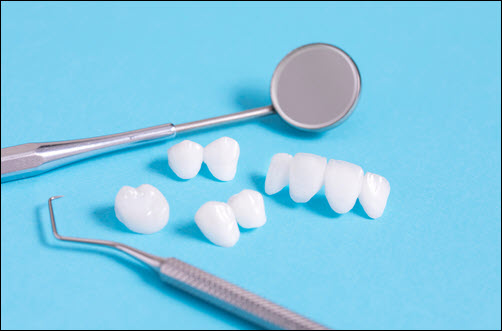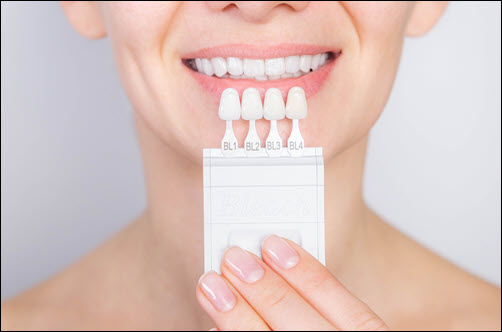The Difference Between Crowns and Veneers
Dental veneers and dental crowns share a foothold in both cosmetic and restorative dental procedures. And while they may function similarly, they are not the same. There are specific differences. If you are considering a ‘smile makeover’ understanding those distinctions and how they affect your finished smile is important.
Crowns Versus Veneers
-

A crown is a covering about 2mm thick and covers the entire tooth. It may be all porcelain, an all-metal alloy, or a porcelain fused to a metal alloy.
- A veneer is a thin layer of porcelain or a resin composite. It is about a millimeter thick and only covers the front of your existing tooth.
Commonalities between Veneers and Crowns
- They change the appearance of your teeth.
- Can restore teeth, although is more protective and structural, while the other is more about aesthetics.
- Can help with speaking, as damaged teeth can cause you to mispronounce words.
- Less jaw pain, as they can minimize pain caused by grinding your teeth.
- Fewer cavities because vulnerable areas are protected.
- Give a whiter, straighter smile thus boosting self-esteem.
Pros and Cons of Crowns
Pros:
- They look more like natural teeth because they cover your teeth completely.
- They are a more durable approach than veneers.
- The crown protects against additional damage or decay.
- They are a good option if dealing with significant dental issues such as cracked or broken teeth.
- If you opt for porcelain crowns, they will look and feel like natural teeth.
- Dental insurance will often cover a portion of the cost.
Cons:
- Part of your original tooth will need to be removed.
- The crowned tooth may be more sensitive to hot or cold foods.
Pros and Cons of Veneers
Pros:
- They are used to cover discolored teeth.
- They are typically light.
- You can match the veneer to the color of your other teeth.
- They are more affordable and less invasive. than crowns.
Cons:
- Enamel must be removed to attach them.
- Durability is dependent on the material chosen for the veneer.
- They are not always covered by insurance.
- The procedure is irreversible.
- They tend to have a shorter lifespan than a crown.
When deciding which to use it is important to think about the ultimate desired outcome. However, common goals for crowns and veneers include covering discolored teeth, restoring damaged teeth, replacing areas of a tooth that have decayed or weakened, and hiding malocclusion (crooked or misaligned teeth). It should also be noted that it is possible to get both veneers and crowns, depending on what you want to achieve. For instance, if you have a decayed or broken tooth, but also want a better smile, then you can have a crown applied to the damaged tooth with veneers added to your other teeth.
If you have questions concerning which approach is best for your smile, be sure to talk to one of our dentists. They can answer your questions and help you make a decision that gives you the result you are looking for. Give us a call today.



